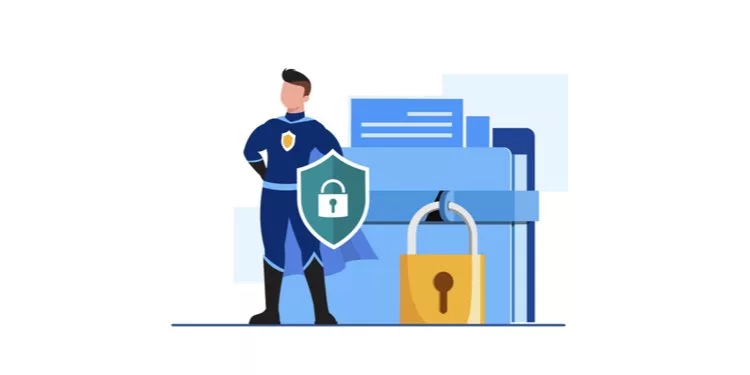What is Privileged Access Management (PAM)? PAM Solutions and Importance
Hello! In today’s world, cyber security is becoming more critical every day. The data of businesses, organizations and even individuals cannot escape being the target of cyber threats. This is exactly where Privileged Access Management (PAM ) comes into play. So, what is PAM? Why is it so important? If you are hearing this term for the first time or want to learn more about it, you are in the right place! In this article, we will take a detailed look at what PAM is, how it works, its advantages and its place in cybersecurity. If you are ready, let’s get started!

What is Privileged Access Management?
Privileged Access Management is a cybersecurity approach that secures privileged accounts with access to an organization’s critical systems, data, or infrastructure. System administrators, IT teams, or employees with high-level authorizations typically use these accounts. By controlling sensitive access points, this approach prevents malicious use and protects against data breaches.
This system ensures authorized individuals access specific systems and actively monitors how, when, and why these accesses occur. It minimizes internal threats (e.g., employees abusing their authority) and external threats (e.g., hackers compromising privileged accounts).
Main Objectives of Access Management
-
Security: The system blocks unauthorized access to critical systems.
-
Monitoring: It records and audits privileged account activities.
-
Compliance: The approach ensures adherence to regulations like GDPR and ISO 27001.
-
Risk Mitigation: It prevents data breaches and cyber-attacks.
Why is Privileged Access Management Important?
In cybersecurity, privileged accounts represent an organization’s “crown jewels.” Hackers gaining control of these accounts can access all systems unrestricted. Verizon’s 2023 Data Breach Report states that 74% of data breaches stem from human error or misuse of privileged accounts. Access management addresses this vulnerability by:
-
Preventing Data Breaches: The system stops misuse of privileged accounts to reduce breaches.
-
Ensuring Compliance: It enables audits of privileged access to meet regulatory requirements in sectors like finance, healthcare, and government.
-
Reducing Internal Threats: This approach prevents employees or former employees from abusing their authority.
-
Providing Fast Response: It enables quick identification of account activities during security incidents.
How Does Access Management Work?
Privileged access management combines technologies and processes tailored to business needs, including the following components:
1. Privileged Account Discovery
The system automatically identifies all privileged accounts (e.g., administrator or database access accounts) within the organization. This process uncovers unmonitored “shadow accounts.”
2. Authentication and Authorization
This approach implements multi-factor authentication (MFA) to verify only authorized users gain access. Additionally, the “principle of least privilege” limits users to necessary authorizations.
3. Access Control
The system manages real-time access requests. For example, it grants an administrator temporary access, which automatically expires after a set period.
4. Session Monitoring and Recording
It records all privileged account sessions for auditing and post-incident analysis. For instance, during a data breach, teams review these For instance, during a data breach, teams review these logs to trace account activities.
5. Automation and Reporting
The system automates access policies and generates regular reports, reducing security team workloads and simplifying compliance audits.
Advantages of Privileged Access Management
The benefits of this management system are not limited to cyber security. Here are the most important advantages:
Enhanced Security: Enhances security by preventing unauthorized access to critical systems.
Operational Efficiency: Automation reduces manual processes and increases the efficiency of IT teams.
Ease of Compliance: Complies with regulatory requirements and simplifies audit processes.
Protection Against Threats: Prevents both employee errors and hacker attacks.
Fast Threat Detection: With real-time monitoring, threats are recognized instantly.
Usage Areas of PAM
It is widely used in different sectors and scenarios. Here are some examples:
Financial Sector: Banks use this system to protect customer data.
Health Sector: Preferred to ensure confidentiality of patient data.
Public Institutions: Applied to protect sensitive government data.
E-commerce: Plays a critical role for payment systems and the security of customer data.
Cloud Computing: Used to control access to cloud-based systems.
What to Consider When Choosing a Solution?
When choosing a solution, you should consider the needs and infrastructure of your organization. Points to consider:
Scalability: The solution must be able to adapt as the organization grows.
Integration: Must be able to work seamlessly with existing systems (Active Directory, SIEM).
User Friendly Interface: It should offer an interface that IT teams can easily use.
Security Features: Features such as MFA, session recording and real-time monitoring should be available.
Support and Updates: The provider should offer regular updates and 24/7 support.
In the future, artificial intelligence and machine learning supported solutions are expected to become more prominent. These technologies will offer a proactive security approach by quickly detecting threats.
In conclusion, Privileged Access Management is a cornerstone of modern cybersecurity strategies. It provides protection against internal and external threats by controlling access to critical systems and data. These solutions offer great advantages to businesses in terms of security, compliance and operational efficiency. If you want to increase the cybersecurity level of your organization, you should consider the possibilities of this management system.
For more information or to implement a solution, you can contact an expert cybersecurity consultant. Remember, it is always safer to be one step ahead in cyber security!


